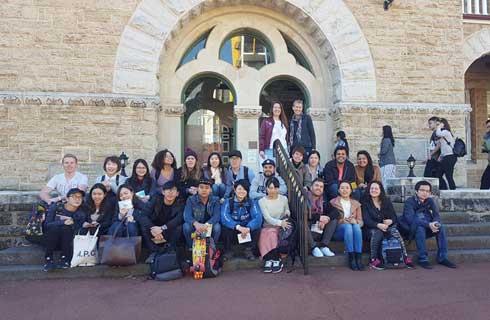国际学生入学条件
Students in their last year of high school should submit transcripts for all years completed thus far. Students who have completed high school must submit final transcripts and degree certificates or exam results.
Students who have studied at a college or university must submit university transcripts to date. If you have completed more than 24 credit hours at a university, you do not need to submit high school transcripts.
Transcripts are required from all high schools or universities attended.
Minimum requirements are 61 TOEFL, 5.5 IELTS, 160 Cambridge English C1 Advanced, or 85-90 Duolingo
展开
IDP—雅思考试联合主办方

雅思考试总分
5.5
- 雅思总分:5.5
- 托福网考总分:61
- 托福笔试总分:160
- 其他语言考试:44 PTE-A
CRICOS代码:
申请截止日期: 请与IDP联系 以获取详细信息。
课程简介
The undergraduate Certificate Program in Neuroscience is an interdisciplinary program requiring 20 credits of training in Neuroscience. The Program provides a group of related courses capped by a research experience. The Program is likely to be of particular interest to students who want to pursue graduate or professional training, but it is intended to appeal to any student interested in Neuroscience.<br>Courses taken for the certificate in the lower division (1000 and 2000 level) may satisfy general education requirements (that is, breadth requirements), if they are approved general education courses. Courses in the upper division (3000 level and above) may satisfy requirements for the student's major, consistently with the major's requirements. All required courses must be completed with a B-average or higher. Pass/Fail grades to not count.<br>Most courses required by the Certificate Program in Neuroscience have prerequisites. Some students may satisfy prerequisites by virtue of their prior curriculum. When this is not the case, students are responsible for satisfying the prerequisites.<br>Upon completion of the program, certificate earners will be able to:<br>Describe the molecular, cellular, and tissue-level organization of the central and peripheral nervous system.<br>Understand the properties of cells that make up the nervous system including the propagation of electrical signals used for cellular communication.<br>Relate the properties of individual cells to their function in organized neural circuits and systems.<br>Explain how the interaction of cells and neural circuits leads to higher level activities such as cognition and behavior.<br>Engage in research, generate testable scientific hypotheses, design experiments, and collect, analyze, and interpret data through collaborative research projects, lab work, internships, and coursework.<br>Demonstrate critical thinking skills by analyzing and evaluating neuroscience primary literature.<br>Effectively communicate scientific information in written and oral formats, prepare and formally present a scientific paper or poster about neuroscience research, including communication of quantitative data in statistics, graphs and tables.<br>Create a career development plan that matches an accurate self-assessment of abilities, achievement, motivation and work habits with specific job opportunities in the neurosciences.
展开







 预科
预科 奖学金
奖学金 实习机会
实习机会 在校学习
在校学习 跨境学习
跨境学习 校园授课-线上开始
校园授课-线上开始 在线/远程学习
在线/远程学习












 匹兹堡大学
匹兹堡大学

 乔治梅森大学
乔治梅森大学

 贝尔维尤学院
贝尔维尤学院

 布鲁克大学
布鲁克大学

 加州大学洛杉矶分校
加州大学洛杉矶分校

 圣母大学
圣母大学










